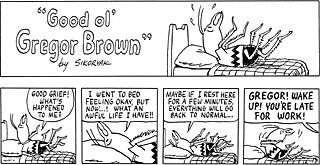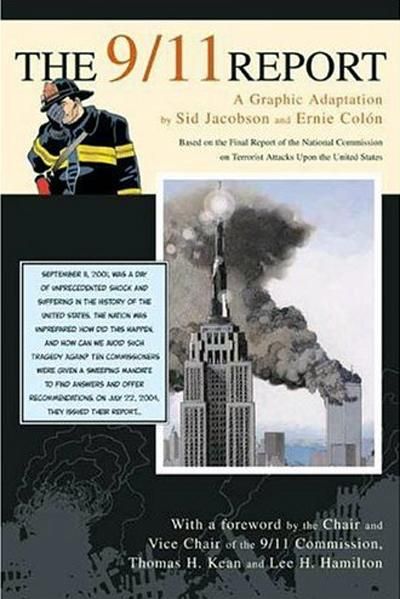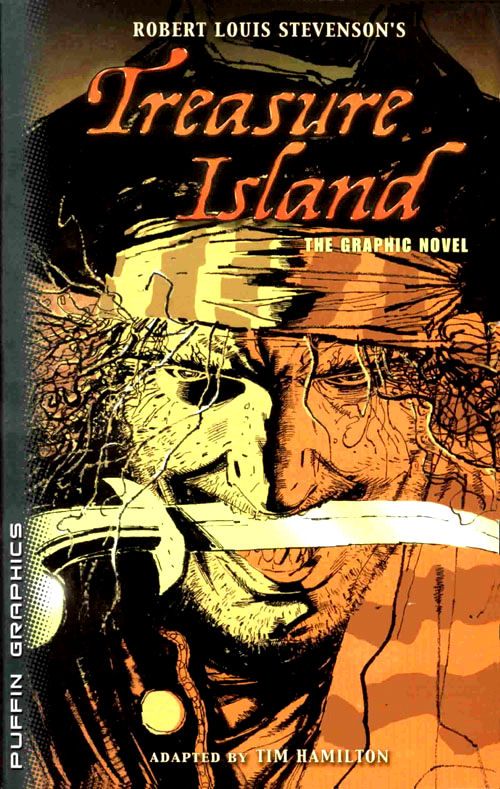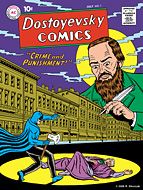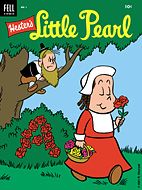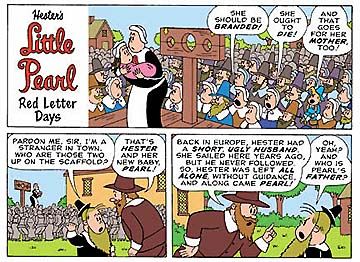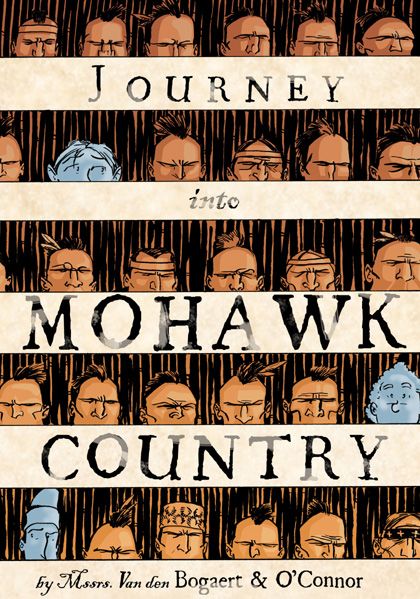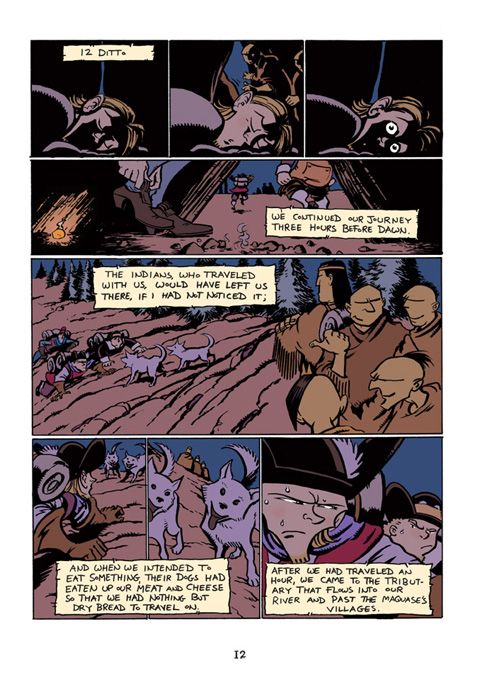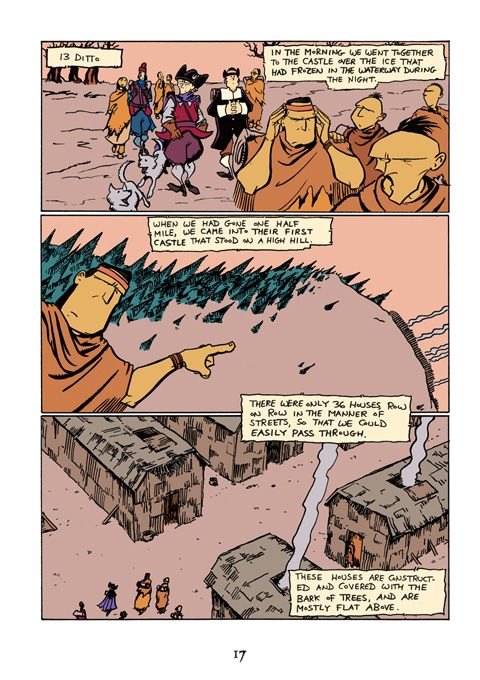I attended a neat panel earlier tonight at the Museum of Comic and Cartoon Art (located in downtown Manhattan) on the topic of comic book adaptations.
The panelists were Ernie Colon (who drew the adaptation of the 911 Report), Tim Hamilton (who did a recent adaptation of Treasure Island), Robert Sikoryak (who reworks classic stories using famous comic characters), George O'Connor (who just released a graphic novel from First Second about a Dutch trader exploring the tribes of New York in the early 17th century) and the panel moderator, David Saylor ( who is the director of Scholastic's Graphix imprint, which features graphic novel adaptations of Goosebumps and The Babysitter's Club).
Saylor asked engaging questions of each panelist, and the audience participation yielded some interesting thoughts on the idea of adapting other works into comic books. It was especially interesting to hear about the unique perspective each individual panelist brought to the idea of adaptations.
Ernie Colon discussed how he and the writer of the adaptation of the 911 Report, Sid Jacobson, decided that the actual 911 Report, while an important work that people should know about, was perhaps a bit too difficult for people (especially younger people) to follow, so Colon suggested the duo present a graphic novel version.
The graphic novel has been immensely popular, and Colon describes how the original 911 Report's authors were initially wary, but ended up being impressed with the job Colon and Jacobson did (even ending up doing a foreword for the graphic novel).
Colon talked about the difficulty of keeping his personal politics out of the comic, even mentioning how his wife would occasionally keep him in line, telling him to perhaps not make Dick Cheney look so menacing...hehe.
Tim Hamilton discussed the sheer amount of work that goes into researching a story set during the time of Robert Lewis Stevenson (Colon also mentioned his copious amounts of research). In this regard, the internet has really been a boon for comic book artists nowadays, as Hamilton mentioned consulting websites where people would reconstruct miniature boats from the time period, so Hamilton could get the details just right.
What's interesting to note is that Hamilton apparently did not read Treasure Island as a boy, only reading it later in life. In either event, the story stuck with him, and the amount of care and effort he put into this project sounds remarkable.
Robert Sikoryak, as compared to the others, is not doing what you would term a traditional adaptation (like turning Gone With The Wind the novel into Gone With The Wind the film), but rather, what he does is to combine a classic work of literature with a classic comic character, and see what kind of interesting statement is the end result.
Batman starring in Crime and Punishment...
Charlie Brown starring in The Metamorphosis...
Little Lulu starring in The Scarlet Letter...
His chameleon-like ability to mirror the styles of the artists is stunning, but even more so is his ability to find not just the obvious humor in these tales, but also the actual connections that exist between the work and the characters, all the while never shortchanging the plot of the story.
Sikoryak described his method of picking which stories to match up, as he mentions keeping a list of characters he wants to use, so, with those characters in mind, he flips through various books of the great Western Canon (Harold Bloom practically has a cottage industry on the topic!).
George O'Connor, too, differs a bit in the reasoning behind his adaptation, as his graphic novel retelling of Harmen Meyndertsz van den Bogaert's memoirs of traveling through what would be New York in the 1630s (which is titled Journey into Mohawk Country) does not presume that we are familiar with the tale, which is the usual way adaptations go. No, here, as O'Connor relates, his interest is more in giving these long-collected historical memoirs a larger audience, as O'Connor, himself, is fascinated with this era in history - where the tribes of New York were truly astonished to see an actual European.
O'Connor did a good deal of research as well, making his work a strong historical work as well as a well-drawn, interesting story.
David Saylor's Graphix imprint is higlighted, in my mind, by the graphic novel adaptations of Ann M. Martin's beloved series The Baby-Sitters Club.
Raina Telgemeier does such a stunning job that I cannot hardly believe my eye. Please note that I've never read a Baby-sitter's Club book (I guess I'm just outside of their demographic...hehe), and I can't really say that I'm interested in the concept, but Telgemeier...lordy, does she adapt the hell out of these stories, infusing them so much personality, characterization and charm that you would have to be pretty darn cold-blooded not to find these pages absolutely delightful.
Saylor hooked on to something big here when he tapped Telgemeier to adapt these titles. And the rest of the plans for Graphix that he described at the panel, such as future work from such artists as Scott Morse and Aaron Renier, show that he is bringing a keen eye for talent to Graphix.
Thanks to all the participants for the fun time (also, thanks to Ken, Gina and Lea - and the other folks whose names I did not learn - for running a great panel)!!

